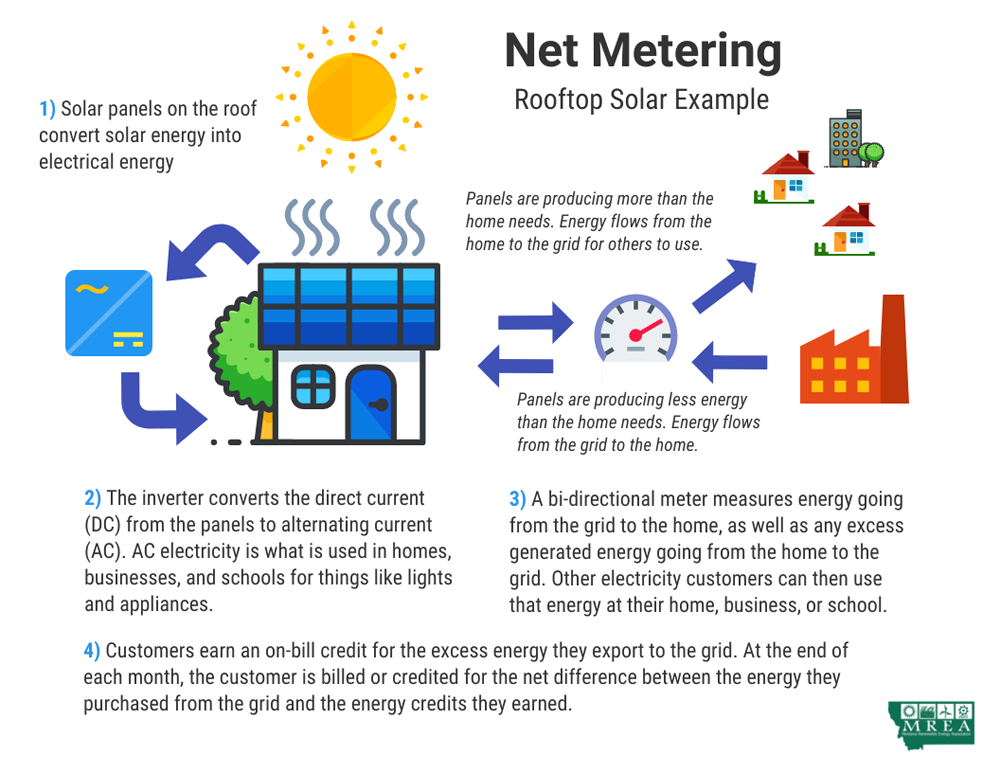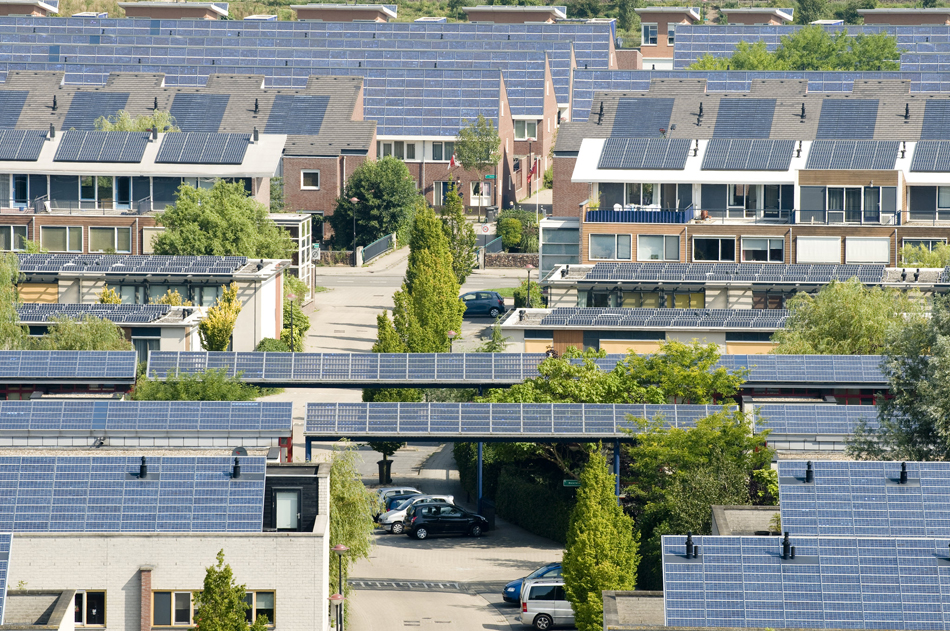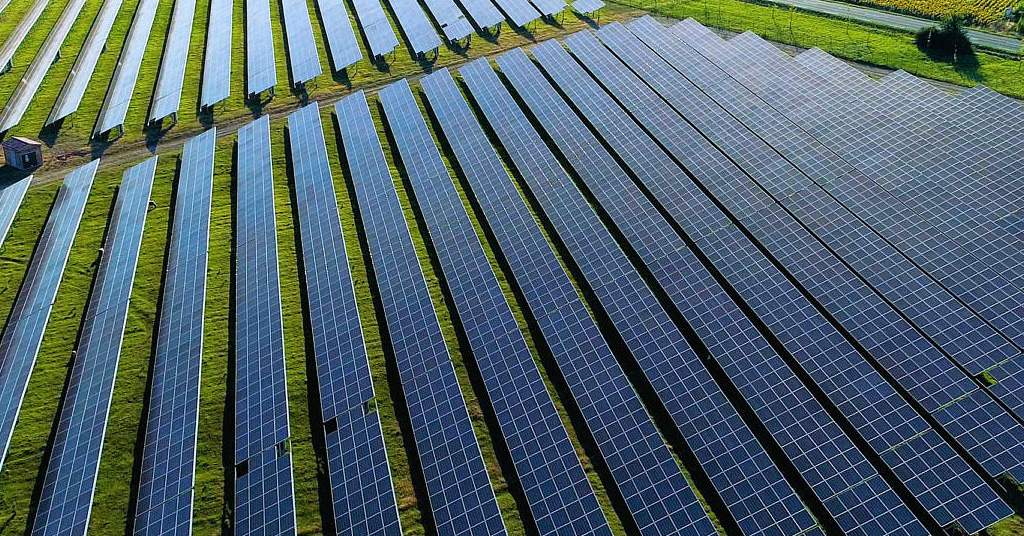Does “net metering,” which allows users to transfer surplus power to the grid, overcompensate solar customers?

Sending it back: Home owners with solar panels have grown accustomed to selling their unused energy to power companies. Photo: Home Depot
By John Harrison. November 14, 2024. Rooftop solar panels have proven popular investments with homeowners, despite long investment-recoupment periods, typically 15 to 20 years.
Homeowners are compensated by their electric utility for the power they generate but don’t use, creating an incentive to install home generation like solar panels.
This year, the Boise-based Idaho Power Company, which also has about 20,000 customers in eastern Oregon, changed its compensation formula to, it says, better reflect real-time power use. This has the effect of lowering the total monthly compensation amount to customers with solar installations.
While Idaho Power is the only regional utility so far to make this change, other investor-owned utilities have at least considered a similar change, but none has initiated one.
Yet.
At Idaho Power and other utilities with customers who generate some of their power, the amount of compensation is determined through “net metering,” which means a homeowner with solar panels connected to an electric utility’s grid can sell power that is not consumed to the utility.
In essence, the electric meter runs forward when the homeowner is using power from the grid, and backward when the homeowner generates a surplus, selling the surplus to the utility.
The calculation that determines the amount of compensation is known as the “export rate.”
The customer is compensated for the net difference.
Selling power to the utility reduces the customer’s overall cost of power, and also incrementally reduces reliance on the utility.
The concept of net metering may seem irrational. A company selling a commodity, in this case electricity, pays its customers for producing the same commodity. Where’s the logic in that?
But think of the benefits, for both the company and customer: the more power a utility buys from its customers, the less it has to buy on the open market, where prices can skyrocket during high-demand times of the year—hot summer evenings, for example.
There’s also a societal benefit: even though the amount of power purchased by a utility through net billing is small compared to its total load, over time net metering could reduce power use enough to put off building new power plants or making expensive upgrades to existing equipment to deal with increasing demand.
Net calculations
Of Idaho Power’s 20,000 customers in eastern Oregon, 262 have onsite generation, nearly all of it solar, according to spokesperson Jordan Rodriguez.
“Our study shows that current pricing policies overcompensate customers with solar at the expense of customers without,” Rodriguez told the energy newsletter Clearing Up.
The company says its new compensation formula is a more accurate way of measuring customers’ reliance on the electricity Idaho Power provides and the amount sold to the utility.
The export rate varies depending on the time of day and month of the year.

Infographic: Montana Renewable Energy Association
On the hottest days of the summer between 3-11 p.m. (the highest-usage times of the day and most expensive for the utility if it has to buy power on the market to meet demand), compensation would be 20.42 cents per kilowatt-hour; all other hours would be compensated at 4.91 cents per kilowatt-hour.
The average over the course of a year is expected to be about 6 cents per kilowatt-hour.
The average rate Idaho Power charges Oregon residential consumers is between 9.75 and 11.4 cents per kilowatt-hour, depending on how much power is used.
Resistance to change
Before its approval by the Idaho PUC, the proposal generated controversy.
In September 2023, about 400 customers submitted comments asking for public hearings on the proposal, according to an article in Clearing Up.
Another 250 customers said that because the proposal didn’t account for environmental benefits of rooftop solar, homeowners would be discouraged from pursuing it.
Some customers asked the Idaho PUC to reject the proposal, according to a Sept. 21 memo by Idaho PUC staff. In response, the PUC accepted the Idaho Power study but asked for amendments that would provide more information about calculating the export rate.

Der: Helpful to the larger grid, distributed energy resources (DER) refers to smaller power generation units that are located on the consumer’s side of the meter, like these in the Dutch city of Amersfoort. Photo: Eneco Group
The proposal also was controversial in Oregon, but the Oregon PUC didn’t receive any filings to change solar compensation for Idaho Power customers, according to Oregon PUC information officer Kandi Young.
In February 2024, the Oregon Public Utilities Commission adopted the same compensation structure applicable to Idaho Power’s customers in Idaho.
According to a May 2023 Oregon PUC staff report, before the policy change, Oregon on-site-generation customers received compensation for excess generation through a monthly net-metering framework and had the ability to roll kilowatt-hours over to future months within a 12-month period.
The new compensation, averaging about 6 cents per kilowatt-hour over the course of a year, is based on actual use and applies only to new net-metering customers in Idaho Power’s Oregon territory; existing net metering customers who received legacy status will still be compensated the same as they were prior to the changes, said Young.
Where Oregon utilities stand
Meanwhile, the two largest utilities in Oregon, PaciCorp and Portland General Electric, compensate residential on-site generation but haven’t proposed any changes.
PacifiCorp compensates on-site generation at 13.7 cents per kilowatt-hour.
Portland General Electric informally proposed last year to change its net-metering offering for new net-metering customers in a similar, time-varying manner to the change made by Idaho Power. But the proposal was immediately criticized because it would reduce net-metering compensation for customers who don’t have linked battery systems.
In a February 2024 letter to Maria Pope, PGE chief executive officer, the Save Oregon Solar Coalition wrote, “this is the wrong time to consider cutting net metering; in fact, PGE and other utilities in Oregon should be expanding net metering programs in order to increase clean energy equity and make faster progress on clean energy goals.”
Additionally, there was concern that adding battery storage would raise the cost of an installation and make it more difficult for consumers, particularly low-income consumers, to take advantage of solar power.
Consequently, PGE didn’t make a formal proposal to the Oregon PUC, said Young.
PGE currently offers traditional net metering, and there’s no proposal from PGE to change that, she said. PGE currently reimburses on-site generation at 19.6 cents per kilowatt-hour.
Where Washington utilities stand
In Washington, where most electric utilities are publicly owned, under state law public utilities are allowed to credit their customers for the generation they don’t use.
Credits are valued at the retail rate of electricity, which varies from utility to utility. The credit can be used to offset future bills.
The Washington Utilities and Transportation Commission (WUTC) regulates three large, investor-owned electric and gas utilities operating in the state—Puget Sound Energy, PacifiCorp and Avista.
PacifiCorp proposed a revision to its net-metering formula in its recent rate case before the WUTC. Like Idaho Power, PacificCorp proposed a time-day-use formula. But there was pushback, and PacificCorp withdrew the proposal.
The WUTC, through the Washington State Academy of Sciences, is conducting a study to determine the value of distributed solar and storage in the state in order to create a methodology that utility regulators could use in the future.
The study timeline is through June 2025. The study is funded by the U.S. Environmental Protection Agency.
The WUTC is studying how to continue net-metering programs to make home generation more accessible to low-income and multi-family dwellings.
The current program has been successful, but most of its beneficiaries have higher-than-average incomes.
“So the question now is how do we spread the benefit more widely, particularly to lower-income customers,” said a source at the Washington Department of Commerce.











I am a Portland General Electric customer with a 2.5 kW solar system. Each March, PGE “trues up” my account by telling me the amount I generated vs the amount I consumed from their grid during the past 12 months. Any excess which I produced is donated to their low income relief fund, so I do not received any compensation.
I am an Idaho resident and have a net-metering contract with Avista Utilities in Washington for my 8.4 KW rooftop solar array. Like Walt, on the yearly anniversary date, my “reserve” gets rolled back to zero. In the five full years since installation, the reserve has represented up to 3,000 KW. I do not know what Avista does with the excess.